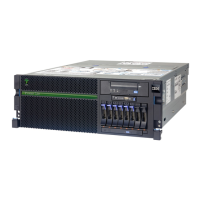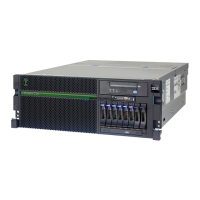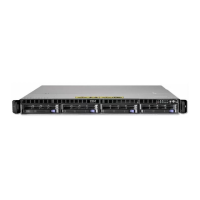Chapter 2. Architecture and technical overview 55
2.3.4 Memory throughput
POWER7+ has exceptional cache, memory, and interconnect bandwidths. Table 2-7 shows
the bandwidth estimate for the Power 770 system running at 3.8 GHz.
Table 2-7 Power 770 memory bandwidth estimates for POWER7+ cores running at 3.8 GHz
With an increase in frequency, the Power 780 running at 4.42 GHz generates higher cache
bandwidth (Table 2-8).
Table 2-8 Power 780 memory bandwidth estimates for POWER7+ cores running at 4.42 GHz
2.3.5 Active Memory Mirroring
Power 770 and Power 780 servers have the ability to provide mirroring of the hypervisor
code across multiple memory DIMMs. If a DIMM that contains the hypervisor code develops
an uncorrectable error, its mirrored partner will enable the system to continue to operate
uninterrupted.
Active Memory Mirroring (AMM) is included with all Power 780 systems at no additional
charge. It can be enabled, disabled, or re-enabled depending on the user’s requirements.
On the Power 770, AMM is optional and must be ordered using feature code 4797. It can be
enabled, disabled, or re-enabled depending on the user's requirements.
The hypervisor code, which resides on the initial DIMMs (J1A to J8A), will be mirrored on the
same group of DIMMs to allow for more usable memory. Table 2-3 on page 51 shows the
DIMMs involved on the memory mirroring operation.
Memory Bandwidth
L1 (data) cache 182.78 GBps
L2 cache 182.78 GBps
L3 cache 121.85 GBps
System memory:
4x enclosures:
68.22 GBps per socket
1091.58 GBps
Inter-node buses (four enclosures) 158.02 GBps
Intra-node buses (four enclosures) 1075.2 GBps
Memory Bandwidth
L1 (data) cache 212.35 GBps
L2 cache 212.35GBps
L3 cache 141.56 GBps
System memory:
4x enclosures:
68.22 GBps per socket
1091.58 GBps
Inter-node buses (four enclosures) 158.02 GBps
Intra-node buses (four enclosures) 1075.2 GBps

